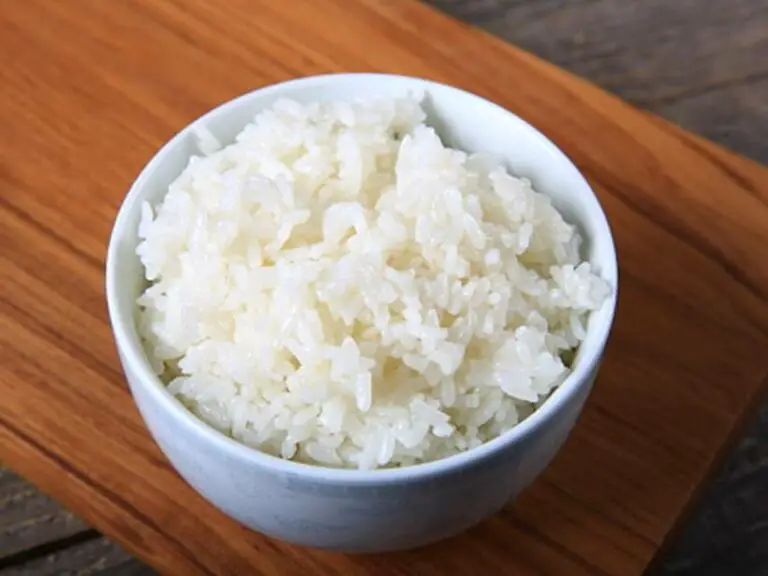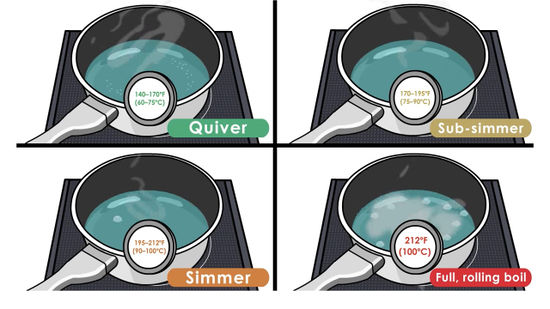Farro, the versatile grain, can be easily cooked to perfection in a Zojirushi rice cooker. With our easy guide, you’ll learn the steps to cooking farro using this popular kitchen appliance. Whether you’re a cooking enthusiast or a busy individual looking for convenience, the Zojirushi rice cooker will help you achieve delicious and hassle-free results.
Key Takeaways:
- Cooking farro in a Zojirushi rice cooker ensures even heat distribution for perfectly cooked grains.
- The rice cooker’s timer feature allows for convenient cooking, especially for busy individuals.
- Prepare the farro by rinsing it under cold water to remove any debris.
- Soaking the farro is optional and can help reduce cooking time.
- Use a 1:2 ratio of farro to water when cooking in a Zojirushi rice cooker.
Why Cook Farro in a Zojirushi Rice Cooker?
Cooking farro in a Zojirushi rice cooker offers a range of benefits that make it an excellent choice for preparing this versatile grain. Firstly, the Zojirushi rice cooker ensures even heat distribution, resulting in perfectly cooked farro every time. This consistent cooking temperature helps to bring out the nutty flavor and chewy texture that makes farro such a delightful ingredient.
Another advantage of using a Zojirushi rice cooker is the convenience it provides. The built-in timer feature allows you to set the cooker and forget about it, making it ideal for busy individuals. Whether you’re preparing dinner after a long day at work or getting ready for a gathering with friends, the rice cooker takes care of the cooking process while you attend to other tasks.
Not only is the Zojirushi rice cooker efficient and convenient, but it also opens up a world of possibilities when it comes to farro recipes. From hearty grain bowls and pilafs to refreshing salads and flavorful soups, the versatility of farro shines through in a variety of dishes. Get creative in the kitchen and experiment with different flavors and ingredients to create delicious meals using your Zojirushi rice cooker-cooked farro.
Why Cook Farro in a Zojirushi Rice Cooker?
| Benefits of using Zojirushi Rice Cooker for Farro |
|---|
| Even heat distribution for perfectly cooked farro |
| Convenient timer feature allows you to set and forget |
| Wide range of farro recipes to explore |
Preparing Farro for Cooking
Before cooking farro in your Zojirushi rice cooker, it’s important to prepare the grain properly. The preparation process involves rinsing the farro under cold water to remove any debris.
Some people also choose to soak the farro for a few hours or overnight. Soaking can help reduce the cooking time, making the farro more tender and easier to digest. However, this step is optional and can be skipped if you’re short on time.
Once you’ve rinsed and soaked (if desired) the farro, it’s ready to be cooked in the Zojirushi rice cooker. The preparation process ensures that the farro is clean and free from any impurities, allowing it to cook evenly and have a delicious taste and texture.
Preparing Farro for Cooking
Before cooking farro in your Zojirushi rice cooker, it’s important to prepare the grain properly. The steps for preparing farro are as follows:
- Rinse the farro under cold water to remove any debris.
- Soak the farro in water for a few hours or overnight (optional).
Rinsing the farro helps remove any impurities and ensures a clean grain for cooking. Soaking the farro can help reduce cooking time and make it more tender. However, if you’re short on time, you can skip the soaking step.
Once the farro is rinsed and soaked (if desired), it’s ready to be cooked in the Zojirushi rice cooker. This preparation process ensures that the farro cooks evenly and results in a delicious taste and texture.
| Preparation Steps | Description |
|---|---|
| Rinse Farro | Under cold water to remove debris |
| Soak Farro | In water for a few hours or overnight (optional) |
Cooking Farro in a Zojirushi Rice Cooker
When it comes to cooking farro, a Zojirushi rice cooker is a game-changer. With its precise temperature control and versatile cooking settings, this popular kitchen appliance ensures that your farro turns out perfectly every time. In this section, we’ll guide you through the process of cooking farro in a Zojirushi rice cooker, including the ideal farro-to-water ratio and cooking settings.
Farro-to-Water Ratio
The key to cooking delicious farro in a Zojirushi rice cooker is getting the perfect ratio of farro to water. We recommend using a 1:2 ratio, meaning for every cup of farro, add two cups of water. This ratio ensures that the farro absorbs enough water to become tender without becoming mushy. Measure out the desired amount of farro and water using the appropriate measuring cups and add them to the rice cooker bowl.
Cooking Settings for Farro
Next, it’s time to select the appropriate cooking setting on your Zojirushi rice cooker. Depending on the model you have, you may find settings like “White Rice,” “Quick Cook,” or even a dedicated “Farro” setting. Choose the setting that best suits your preferences and start the cooking process. The rice cooker will automatically adjust the cooking time and temperature based on the chosen setting, ensuring optimal results.
Once the cooking process is complete, give the farro a gentle stir with a fork to fluff it up and let it sit for a few minutes to allow any excess moisture to evaporate. Your perfectly cooked farro is now ready to be enjoyed in a variety of dishes, from salads to soups and everything in between.
| Farro-to-Water Ratio: | 1:2 |
|---|---|
| Cooking Settings: | Choose the appropriate setting (e.g., White Rice, Quick Cook, Farro) on your Zojirushi rice cooker |
| Cooking Time: | Refer to the specific instructions in your rice cooker’s manual |
Ideal Cooking Time for Farro
When it comes to cooking farro in a Zojirushi rice cooker, finding the ideal cooking time is key to achieving the perfect texture. The cooking time for farro in this versatile kitchen appliance typically ranges from 30 to 45 minutes, depending on your desired consistency and chewiness.
For a chewier texture, it’s recommended to cook the farro in the rice cooker for around 30 minutes. This will result in a slightly firm and pleasantly toothsome grain that holds its shape well. On the other hand, if you prefer a softer and more tender texture, you can extend the cooking time to around 45 minutes. This will yield a creamier and more melt-in-your-mouth experience.
However, it’s essential to always refer to the specific instructions in your Zojirushi rice cooker’s manual for precise cooking times. Each model may have slight variations in cooking temperature and time, so following the manufacturer’s guidelines will help you achieve consistent and reliable results every time you cook farro.
| Texture | Cooking Time |
|---|---|
| Chewier | Approximately 30 minutes |
| Softer | Approximately 45 minutes |
Serving and Enjoying Cooked Farro
Once the farro is cooked to perfection in your Zojirushi rice cooker, it’s time to savor its delicious flavors and incorporate it into your meals. Whether you’re looking for a nutritious side dish or a hearty main course, there are endless possibilities to enjoy this versatile grain.
One simple and satisfying way to serve cooked farro is as a side dish. Season it with a pinch of salt, a drizzle of olive oil, and a sprinkle of fresh herbs. Serve it alongside roasted vegetables, grilled chicken, or fish for a wholesome meal that will satisfy your taste buds.
If you’re in the mood for a refreshing salad, toss cooked farro with vibrant greens, cherry tomatoes, cucumbers, and feta cheese. Dress it with a tangy vinaigrette or a creamy avocado dressing for a burst of flavor. You can also add some grilled shrimp or chicken for added protein.
Looking for a more substantial meal? Use cooked farro as a base for various protein and vegetable dishes. Top it with sautéed mushrooms, spinach, and a poached egg for a nutritious breakfast bowl. Alternatively, mix it with roasted butternut squash, caramelized onions, and goat cheese for a delightful vegetarian dinner option.
FAQ
Can I cook farro in a Zojirushi rice cooker?
Yes, a Zojirushi rice cooker is a versatile appliance that can be used to cook farro to perfection.
What are the benefits of cooking farro in a Zojirushi rice cooker?
Cooking farro in a Zojirushi rice cooker ensures even heat distribution and convenient timer features for busy individuals. Many delicious farro recipes can also be experimented with using this kitchen appliance.
Do I need to soak farro before cooking it in a Zojirushi rice cooker?
Soaking farro is optional but can help reduce cooking time. Rinsing the grain under cold water to remove debris is important before cooking.
What is the recommended farro to water ratio for cooking in a Zojirushi rice cooker?
The recommended ratio is 1:2, meaning for every cup of farro, add 2 cups of water to the rice cooker.
Which cooking setting should I choose for cooking farro in a Zojirushi rice cooker?
Select the appropriate setting, such as “White Rice” or “Quick Cook,” for cooking farro in a Zojirushi rice cooker. The cooker will automatically adjust the time and temperature for optimal results.
How long does it take to cook farro in a Zojirushi rice cooker?
The cooking time for farro in a Zojirushi rice cooker typically ranges from 30 to 45 minutes, depending on the desired texture. Refer to the specific instructions in your rice cooker’s manual for precise cooking times.
How should I serve and enjoy cooked farro?
Cooked farro can be enjoyed as a side dish, in salads, soups, or as a base for various protein and vegetable dishes. Get creative in the kitchen and try different recipes using your freshly cooked farro from the Zojirushi rice cooker.



